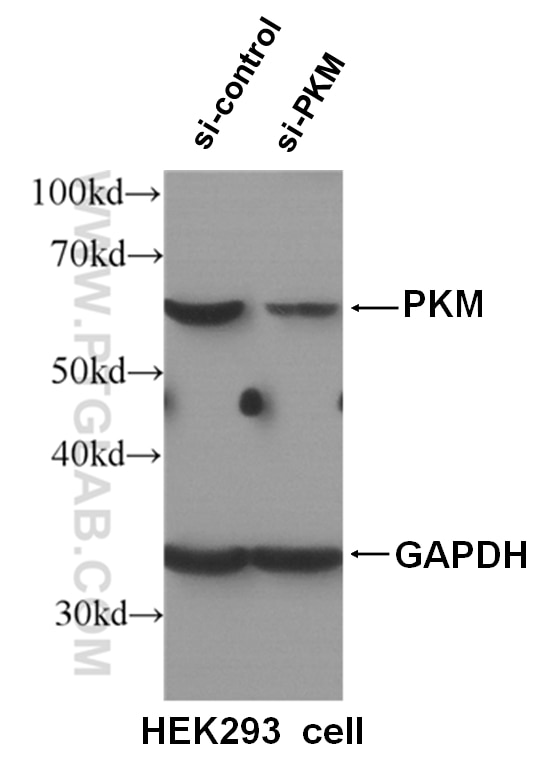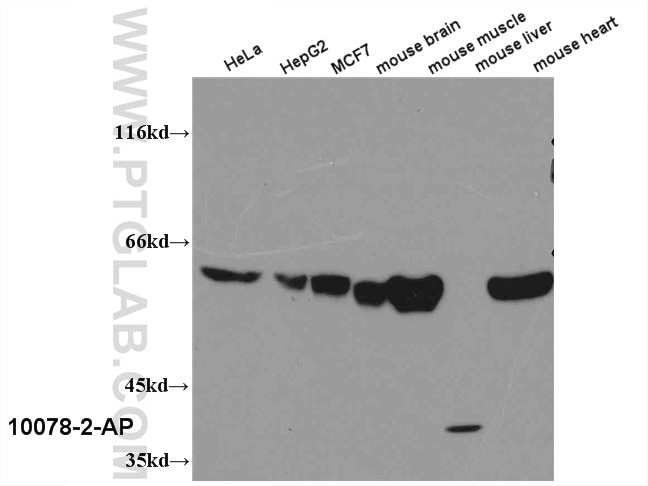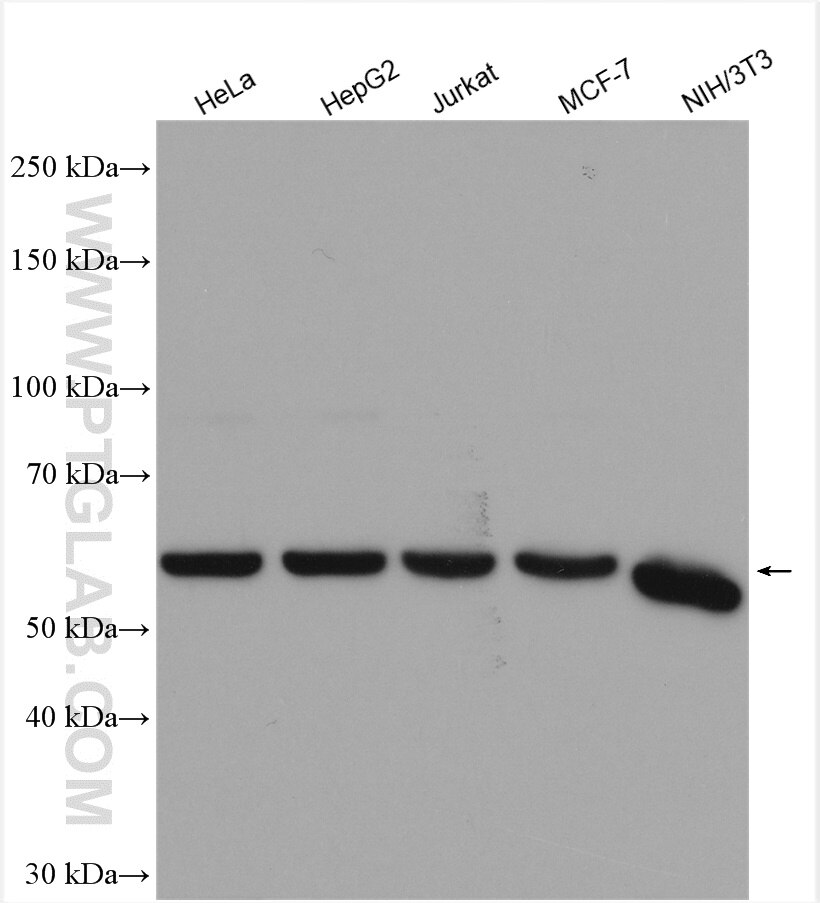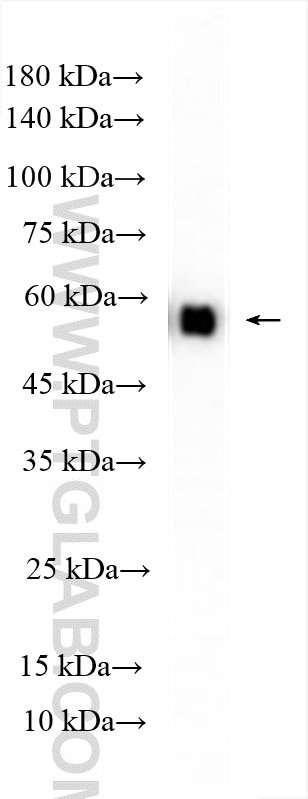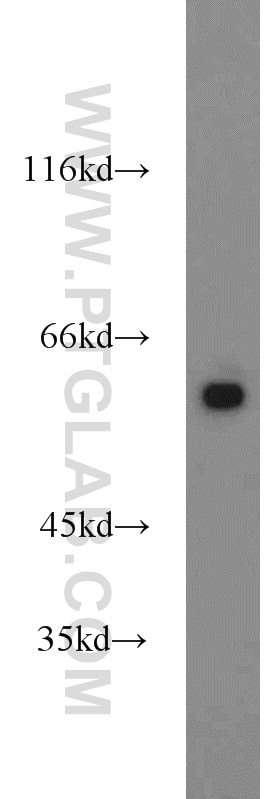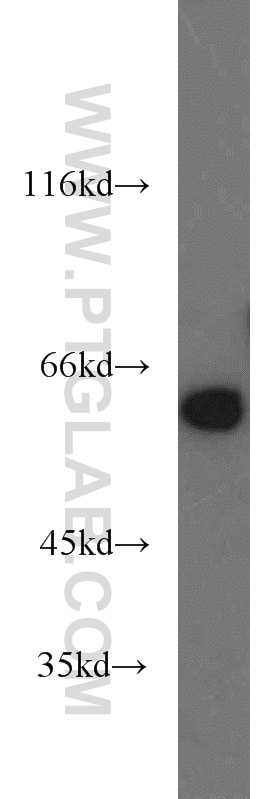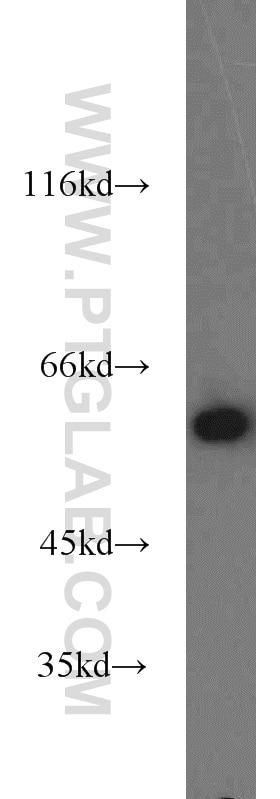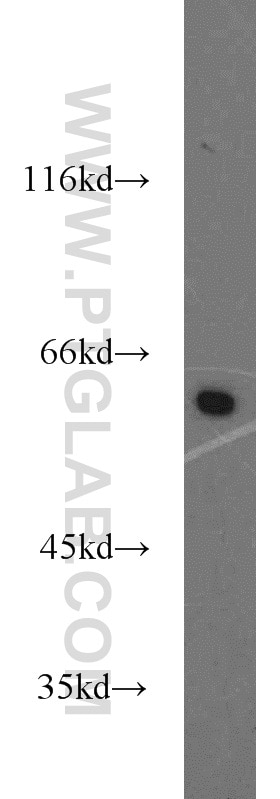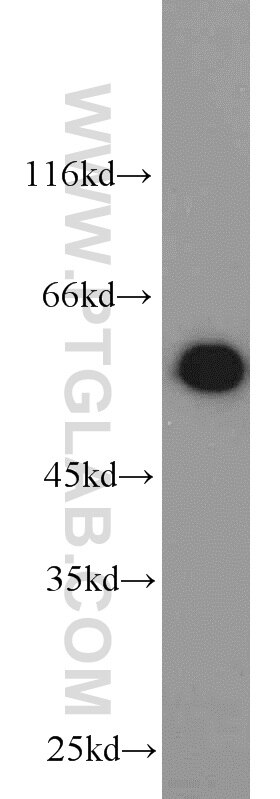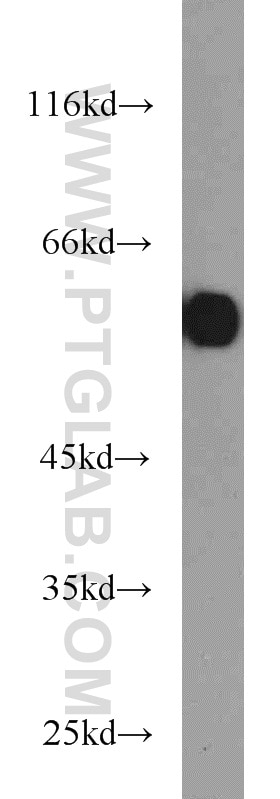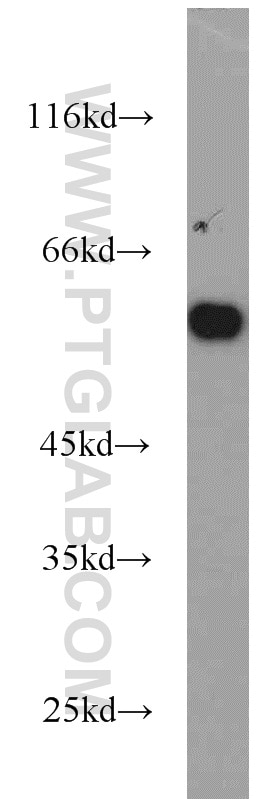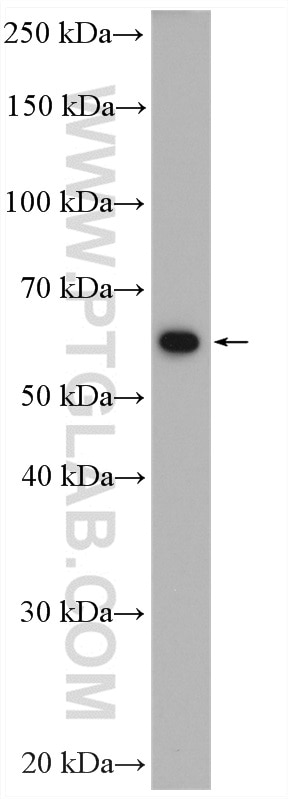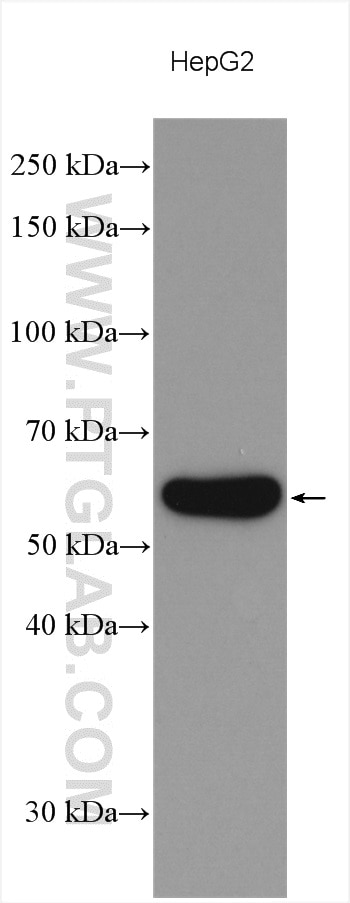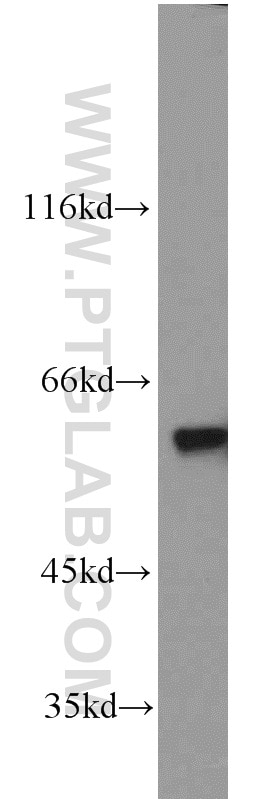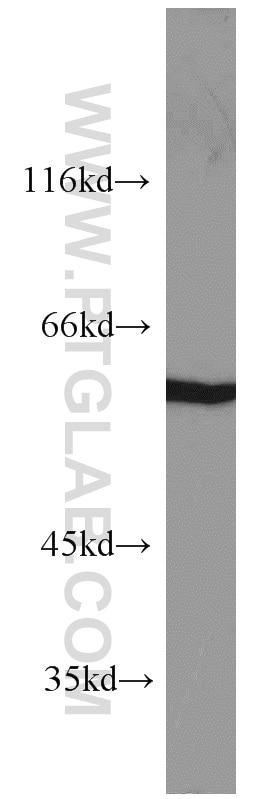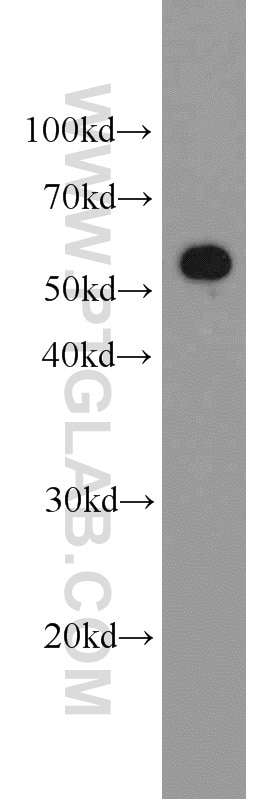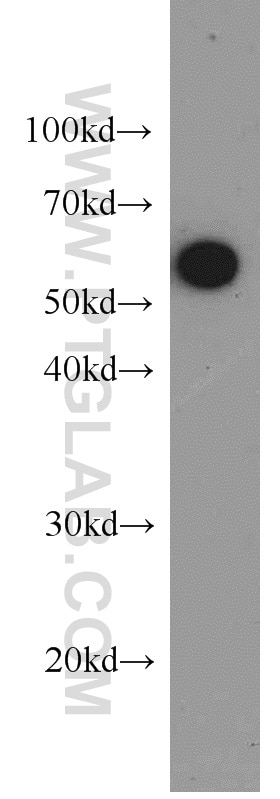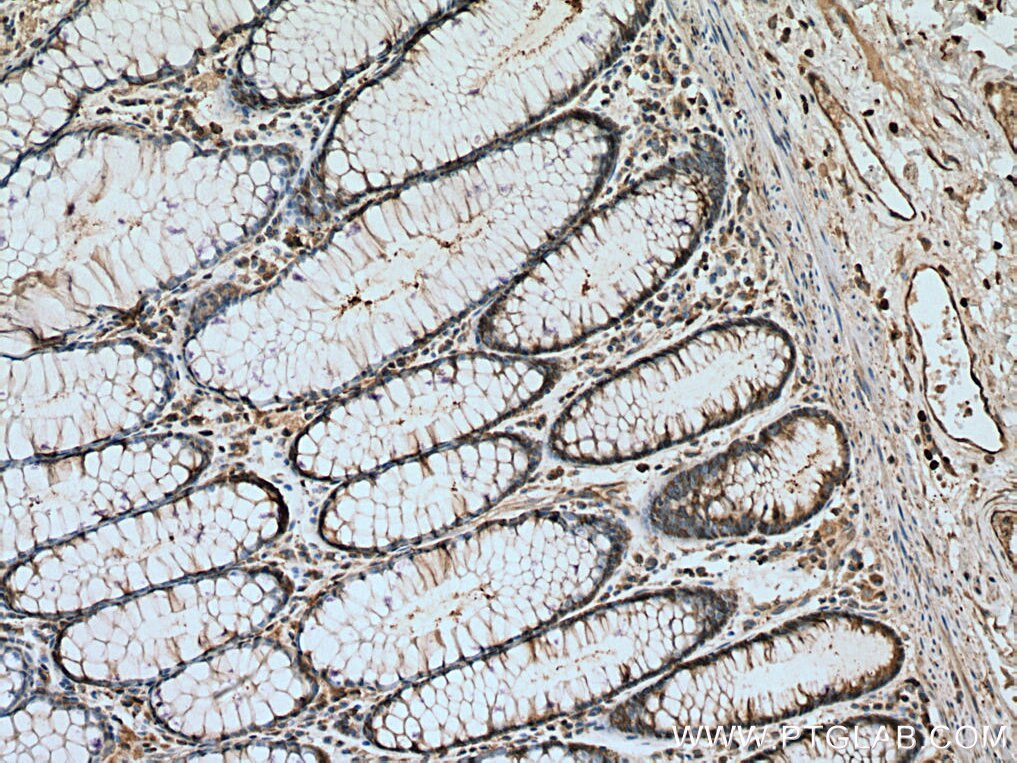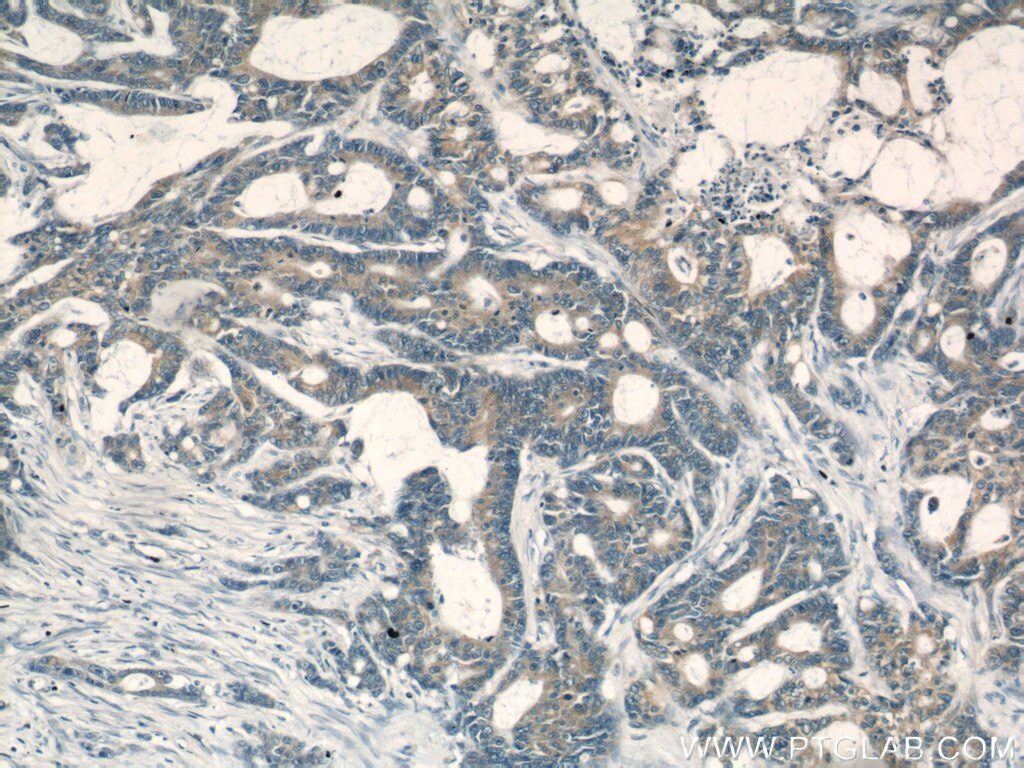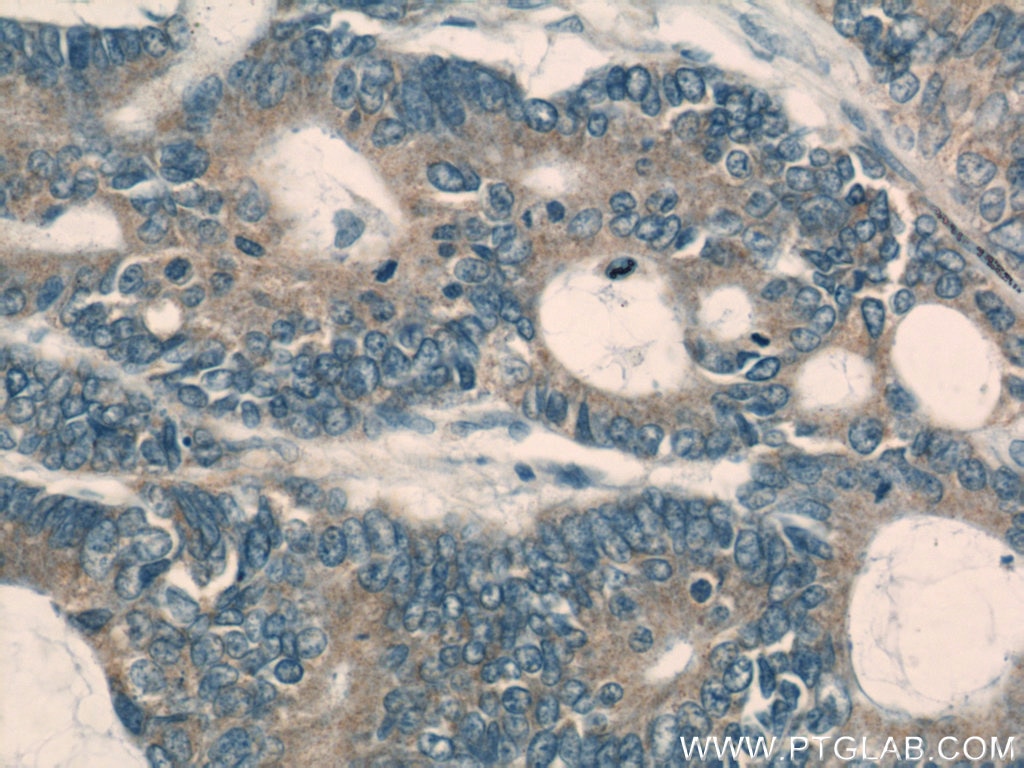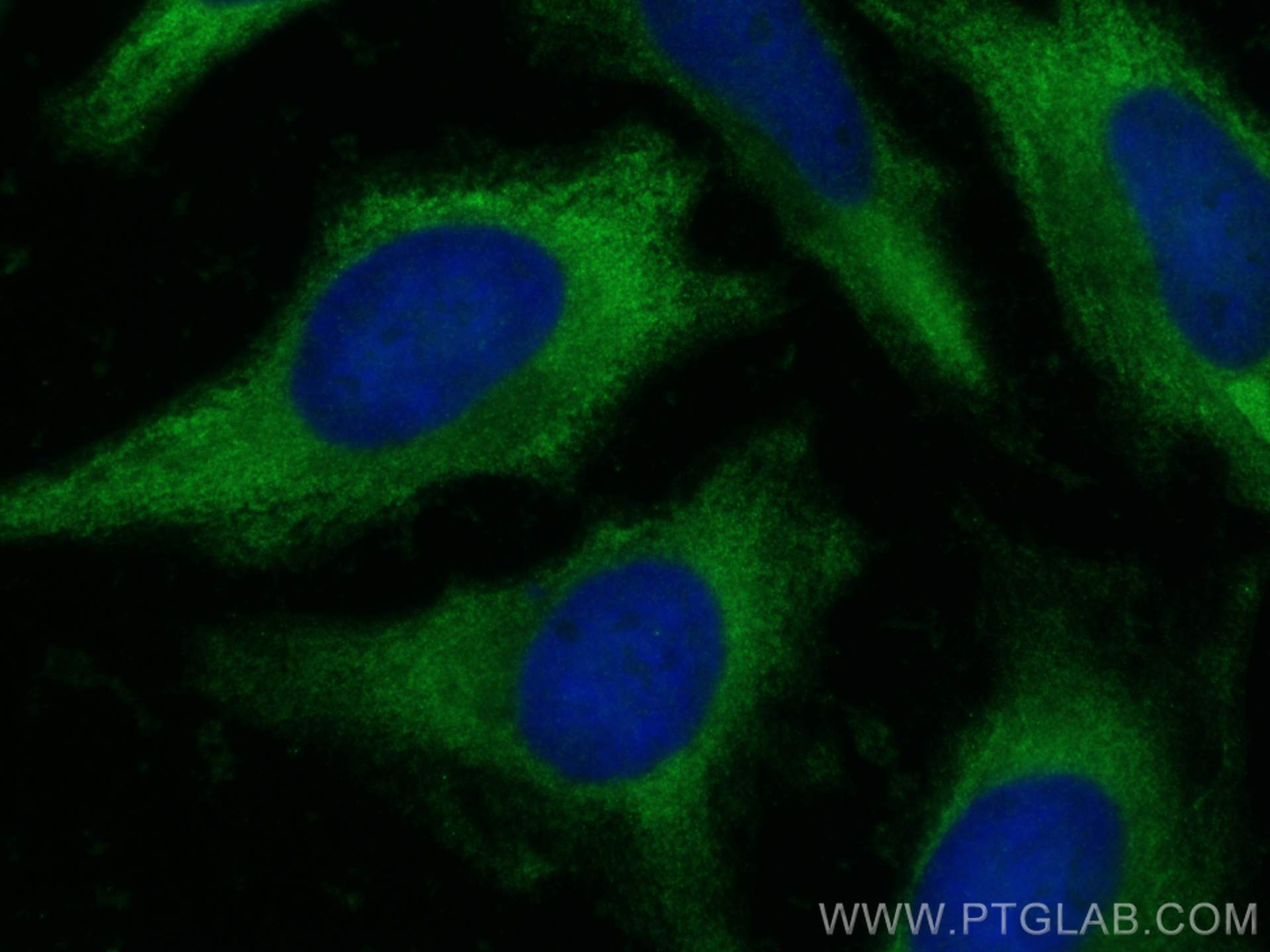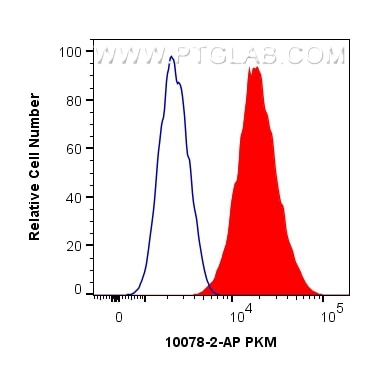Validation Data Gallery
Tested Applications
| Positive WB detected in | HeLa cells, multi-cells/tissue, Raji cells, SH-SY5Y cells, Jurkat cells, MCF-7 cells, SKOV-3 cells, NIH/3T3 cells, HepG2 cells, HEK-293 cells, rat skeletal muscle tissue, mouse brain tissue, mouse muscle tissue, mouse heart tissue |
| Positive IHC detected in | human colon cancer tissue Note: suggested antigen retrieval with TE buffer pH 9.0; (*) Alternatively, antigen retrieval may be performed with citrate buffer pH 6.0 |
| Positive IF/ICC detected in | HeLa cells |
| Positive FC (Intra) detected in | HepG2 cells |
Recommended dilution
| Application | Dilution |
|---|---|
| Western Blot (WB) | WB : 1:1000-1:4000 |
| Immunohistochemistry (IHC) | IHC : 1:250-1:1000 |
| Immunofluorescence (IF)/ICC | IF/ICC : 1:200-1:800 |
| Flow Cytometry (FC) (INTRA) | FC (INTRA) : 0.40 ug per 10^6 cells in a 100 µl suspension |
| It is recommended that this reagent should be titrated in each testing system to obtain optimal results. | |
| Sample-dependent, Check data in validation data gallery. | |
Published Applications
| WB | See 25 publications below |
| IHC | See 5 publications below |
| IF | See 1 publications below |
| IP | See 1 publications below |
Product Information
10078-2-AP targets PKM in WB, IHC, IF/ICC, FC (Intra), IP, ELISA applications and shows reactivity with human, mouse, rat samples.
| Tested Reactivity | human, mouse, rat |
| Cited Reactivity | human, mouse, rat, pig |
| Host / Isotype | Rabbit / IgG |
| Class | Polyclonal |
| Type | Antibody |
| Immunogen | PKM fusion protein Ag0110 相同性解析による交差性が予測される生物種 |
| Full Name | PKM pyruvate kinase, muscle |
| Calculated molecular weight | 58 kDa |
| Observed molecular weight | 58 kDa |
| GenBank accession number | BC000481 |
| Gene Symbol | PKM |
| Gene ID (NCBI) | 5315 |
| RRID | AB_2283775 |
| Conjugate | Unconjugated |
| Form | Liquid |
| Purification Method | Antigen affinity purification |
| UNIPROT ID | P14618 |
| Storage Buffer | PBS with 0.02% sodium azide and 50% glycerol{{ptg:BufferTemp}}7.3 |
| Storage Conditions | Store at -20°C. Stable for one year after shipment. Aliquoting is unnecessary for -20oC storage. |
Background Information
PKM, also named as OIP3, PK2, PK3, PKM1/2, p58, THBP1, CTHBP and Tumor M2-PK, belongs to the pyruvate kinase family. It is glycolytic enzyme that catalyzes the transfer of a phosphoryl group from phosphoenolpyruvate (PEP) to ADP, generating ATP. It stimulates POU5F1-mediated transcriptional activation. PKM plays a general role in caspase independent cell death of tumor cells. PKM has 2 isoforms named as PKM1/M2. The activity of the M2 isoform can be inhibited by tyrosine kinase signalling in tumourcells. The primary pyruvate kinase isoform before tumour development is PKM1; however, the primary isoform from four independent tumours is PKM2.(PMID:18337823). This antibody can recognize both PKM1 and PKM2.
Protocols
| Product Specific Protocols | |
|---|---|
| WB protocol for PKM antibody 10078-2-AP | Download protocol |
| IHC protocol for PKM antibody 10078-2-AP | Download protocol |
| IF protocol for PKM antibody 10078-2-AP | Download protocol |
| Standard Protocols | |
|---|---|
| Click here to view our Standard Protocols |
Publications
| Species | Application | Title |
|---|---|---|
Sci Adv CGG repeat RNA G-quadruplexes interact with FMRpolyG to cause neuronal dysfunction in fragile X-related tremor/ataxia syndrome. | ||
Cancer Sci Identification of TPI1 As a potential therapeutic target in pancreatic cancer with dependency of TP53 mutation using multi-omics analysis | ||
J Cell Mol Med METTL14/miR-29c-3p axis drives aerobic glycolysis to promote triple-negative breast cancer progression though TRIM9-mediated PKM2 ubiquitination | ||
Sci Rep Proteomic analysis indicates that mitochondrial energy metabolism in skeletal muscle tissue is negatively correlated with feed efficiency in pigs. |
